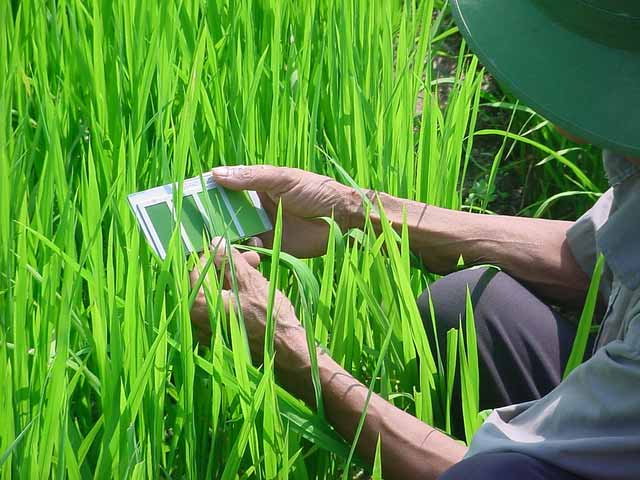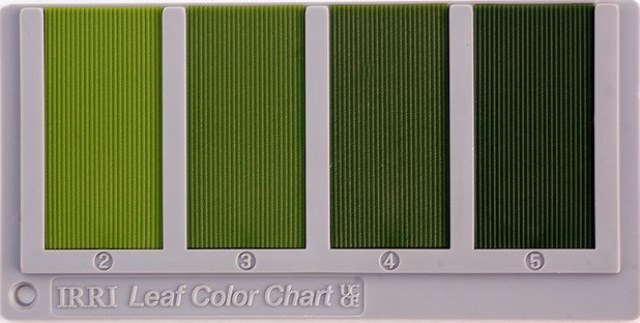Leaf Color Chart
 Nitrogen (N) fertilizer is important in rice production. Apply N fertilizer several times during the growing season to ensure that the crop's nitrogen need is supplied, particularly at critical growth stages.
Nitrogen (N) fertilizer is important in rice production. Apply N fertilizer several times during the growing season to ensure that the crop's nitrogen need is supplied, particularly at critical growth stages.
The Leaf Color Chart (LCC) is used to determine the N fertilizer needs of rice crops. LCC has four green strips, with color ranging from yellow green to dark green. It determines the greenness of the rice leaf, which indicates its N content.
How to use the Leaf Color Chart
Use the LCC once every 7−10 days starting from the beginning of tillering (14 DAT). Continue this process up to 5−10 days after panicle initiation.











